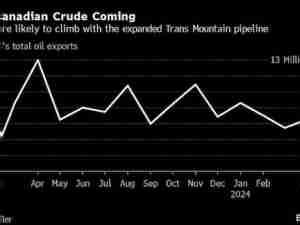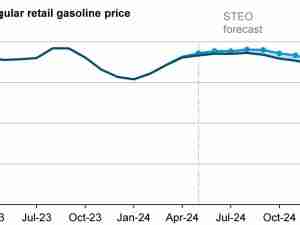Oil extended losses after an industry report showed a surprise build in U.S. crude inventories, adding to concerns over a split within OPEC.
Futures fell toward $44 a barrel in New York after the American Petroleum Institute was said to report a 4.15 million-barrel increase in domestic crude stocks last week, while most market observers expect a decline. The report also showed increases in both gasoline and diesel inventories ahead of U.S. government figures on Wednesday.
Oil traded lower much of the day as informal OPEC talks continue by phone after a meeting with allies of the cartel was shifted to Thursday, to allow for more time to reach a deal on production policy. Friction between Saudi Arabia and the United Arab Emirates prevented what was widely expected to be a routine agreement to extend output curbs expiring this month.
“Last time Saudi Arabia got into a disagreement with the other OPEC members, they had reversed course,” said Phil Streible, chief market strategist at Blue Line Futures LLC in Chicago. “With oil prices running up for weeks now, it might be a short-term top in the market.”
With cracks appearing in the OPEC+ alliance, Saudi Energy Minister Prince Abdulaziz bin Salman signaled his dissatisfaction by threatening to resign as co-chair of a committee that oversees the output deal. The eroding unity among the group comes at a time when the market may struggle to absorb more barrels, with demand still weak due to the pandemic.
Still, the downside has been limited as portions of the oil futures curve continue to strengthen. The spread between Brent’s nearest contracts returned to backwardation, signaling anticipation for tighter supply and stronger demand.
“People figure this is the same old story,” said Michael Lynch, president of Strategic Energy & Economic Research. “They’ll argue but they’ll finally come to an agreement, because no one wants the price to collapse.”
OPEC+ is likely to agree on a face-saving compromise, with a short extension the probable outcome followed by a phased return of production, RBC Capital Markets analyst Helima Croft wrote in a report. If an agreement isn’t reached and cuts are eased as scheduled, Brent prices are at risk of dropping back toward $40 and the market could face an oversupply of as much as 2 million barrels a day next quarter, Wood Mackenzie Ltd. said.
In some parts of the world, demand appears to be stabilizing. Around 20 tankers carrying U.S. crude will be heading to Asia this month. Plus, factory activity in some of North Asia’s biggest export-led economies rebounded in November.












